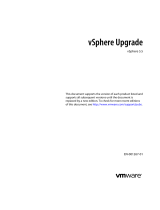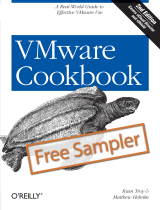
7 Configuring and Managing Fluid Cache Clusters.........................................26
Creating a Fluid Cache Cluster...........................................................................................................26
Mapping Volumes in Fluid Cache....................................................................................................... 27
Mapping Volume to Servers..........................................................................................................27
Mapping Volumes to a Subcluster................................................................................................28
Adding Servers to a Fluid Cache Cluster............................................................................................29
Adding Cache Devices to a Fluid Cache Cluster............................................................................... 29
Adding Hardware to a VSA..................................................................................................................30
Adding a Storage Center to a Fluid Cache Cluster............................................................................30
A Maintaining Fluid Cache Installations.............................................................31
Removing Volume Mappings.............................................................................................................. 31
Removing Volume Mappings from a Server.................................................................................31
Removing Volume Mappings from a Subcluster..........................................................................32
Removing a Server from a Fluid Cache Cluster................................................................................. 32
Removing a Cache Device from a Fluid Cache Cluster.................................................................... 33
Deleting or Removing a Fluid Cache Cluster.....................................................................................33
Deleting a Cluster..........................................................................................................................34
Removing a Cluster.......................................................................................................................34
Recreating a Fluid Cache Cluster....................................................................................................... 35
Upgrading Fluid Cache Cluster...........................................................................................................35
B Troubleshooting Fluid Cache Installations....................................................37
Basic Troubleshooting Steps.............................................................................................................. 37
The Mellanox Virtual Function is not Available for Passthrough in ESXi 6.0.....................................37
Server Does Not Appear in List of Servers......................................................................................... 38
Cache Device Does Not Appear in List of Cache Devices................................................................ 38
Cache Device Cannot Be Added to a Cluster....................................................................................38
Cannot Select a Specific Cache Mode ..............................................................................................38
Cached LUNs Are Unavailable............................................................................................................39
Enterprise Manager Freezes While Adding or Removing a Volume Mapping..................................39
Unable to Map Volumes to Fluid Cache using Enterprise Manager................................................. 39
Cannot Configure the Cache Network..............................................................................................40
Cannot Create a Fluid Cache Cluster.................................................................................................41
Cannot Map Volumes to a Fluid Cache Cluster.................................................................................41
Cannot Connect to Cluster Nodes.....................................................................................................41
Fluid Cache License Is Expired........................................................................................................... 42
Fluid Cache License Is Invalid.............................................................................................................42
Cannot Assign or Remove a Storage Center..................................................................................... 42
Cannot Determine Which Cache Device Failed................................................................................ 43
Events for Fluid Cache Are Not Shown in Enterprise Manager.........................................................43
Unable to PCI Passthrough a Samsung NVMe Flash Drive to Fluid Cache VSA through
VMware vCenter Web Client.............................................................................................................. 43
4





















